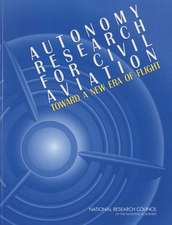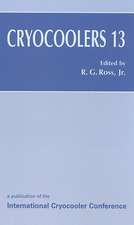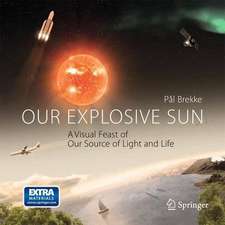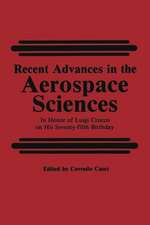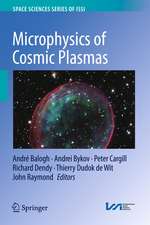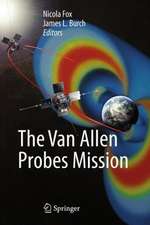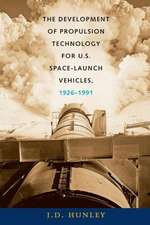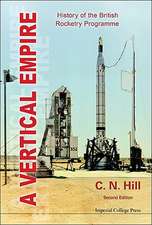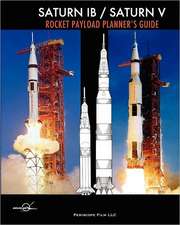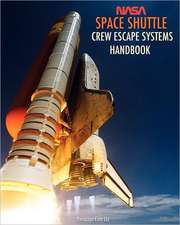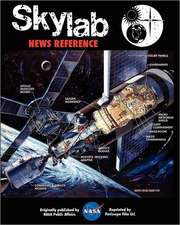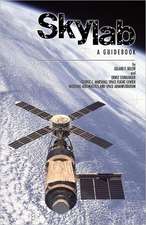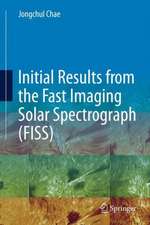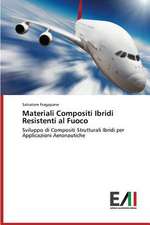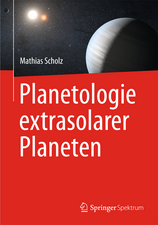Space Weather & Telecommunications: The Springer International Series in Engineering and Computer Science, cartea 782
Autor John M. Goodmanen Limba Engleză Hardback – 10 dec 2004
| Toate formatele și edițiile | Preț | Express |
|---|---|---|
| Paperback (1) | 949.55 lei 6-8 săpt. | |
| Springer Us – 6 dec 2010 | 949.55 lei 6-8 săpt. | |
| Hardback (1) | 956.81 lei 6-8 săpt. | |
| Springer Us – 10 dec 2004 | 956.81 lei 6-8 săpt. |
Din seria The Springer International Series in Engineering and Computer Science
- 24%
 Preț: 1041.97 lei
Preț: 1041.97 lei - 20%
 Preț: 643.50 lei
Preț: 643.50 lei - 18%
 Preț: 1225.62 lei
Preț: 1225.62 lei - 18%
 Preț: 965.02 lei
Preț: 965.02 lei - 20%
 Preț: 646.12 lei
Preț: 646.12 lei - 18%
 Preț: 948.79 lei
Preț: 948.79 lei - 20%
 Preț: 646.62 lei
Preț: 646.62 lei - 15%
 Preț: 637.46 lei
Preț: 637.46 lei - 20%
 Preț: 643.83 lei
Preț: 643.83 lei - 18%
 Preț: 949.23 lei
Preț: 949.23 lei - 20%
 Preț: 644.48 lei
Preț: 644.48 lei - 20%
 Preț: 994.92 lei
Preț: 994.92 lei - 20%
 Preț: 645.97 lei
Preț: 645.97 lei - 18%
 Preț: 946.87 lei
Preț: 946.87 lei - 20%
 Preț: 995.57 lei
Preț: 995.57 lei - 18%
 Preț: 956.99 lei
Preț: 956.99 lei - 20%
 Preț: 644.98 lei
Preț: 644.98 lei - 15%
 Preț: 649.54 lei
Preț: 649.54 lei - 18%
 Preț: 950.21 lei
Preț: 950.21 lei - 18%
 Preț: 1221.38 lei
Preț: 1221.38 lei - 18%
 Preț: 957.62 lei
Preț: 957.62 lei - 15%
 Preț: 643.99 lei
Preț: 643.99 lei - 18%
 Preț: 948.47 lei
Preț: 948.47 lei - 18%
 Preț: 947.35 lei
Preț: 947.35 lei - 20%
 Preț: 1284.65 lei
Preț: 1284.65 lei - 20%
 Preț: 1633.95 lei
Preț: 1633.95 lei - 20%
 Preț: 1285.78 lei
Preț: 1285.78 lei
Preț: 956.81 lei
Preț vechi: 1166.84 lei
-18% Nou
Puncte Express: 1435
Preț estimativ în valută:
183.13€ • 190.47$ • 153.47£
183.13€ • 190.47$ • 153.47£
Carte tipărită la comandă
Livrare economică 13-27 martie
Preluare comenzi: 021 569.72.76
Specificații
ISBN-13: 9780387236704
ISBN-10: 0387236708
Pagini: 382
Ilustrații: XX, 382 p.
Dimensiuni: 156 x 234 x 28 mm
Greutate: 0.77 kg
Ediția:2005
Editura: Springer Us
Colecția Springer
Seria The Springer International Series in Engineering and Computer Science
Locul publicării:New York, NY, United States
ISBN-10: 0387236708
Pagini: 382
Ilustrații: XX, 382 p.
Dimensiuni: 156 x 234 x 28 mm
Greutate: 0.77 kg
Ediția:2005
Editura: Springer Us
Colecția Springer
Seria The Springer International Series in Engineering and Computer Science
Locul publicării:New York, NY, United States
Public țintă
Professional/practitionerCuprins
The Origins of Space Weather.- The Ionosphere.- Telecommunication Systems.- Prediction Services and Systems.- Research Activities and Programs.- Epilogue.
Recenzii
"Goodman writes chronologically, and often describes his professional experiences as if recording a scientific jounral or diary. Thus, it is easy to follow the complex threads of physical science inquiry, as he travels from meeting to meeting where other scientists also present their findings.One need not be a mathematician to interpret the meanings of a few dozen equations. A bachelor's degree in physics, a related science, or engineering will suffice to comprehend fully the concepts.
In the first part, attention is given to the sun, the magnetosphere and geomagnetic storms, and the ionosphere. There is an excellent summary of recent work in modeling and prediction, and the author makes the point that 'we are now unfortunately faced with the job of predicting outcomes from models driven by parameters that also need to be predicted,' and continues on to address the unvertainty in this process. Readers engaged in the space weather field will find an excellent overview of the topic, which includes storm and ionospheric modeling. Attention is given to ionospheric layers, sporadic-E, solar flares, European Union (EU) COST action models, and scintillation models. A significant feature of the first part is that the names and organizations of researchers are cited. This allows the reader to reach into the literature for additional technical details about this research, most of which is recent or current.
The second part is devoted to studying propagation in the bands from extremely low frequency through extremely high frequency, which is essentially the entire real-world telecommunications spectrum. The growth in technology, including the extensive use of global positioning systems, suggests that this part has many innovations, particularly in the high frequency spectrum, in which the author makes the connection to space weather...
Goodman has produced a book that is readable, and presents a comprehensive up-to-date overview of the relationshipbetween space weather and the telecommunications field. Written primarily for physical science specialists and engineers, it also will be useful to licensed amateur radio operators engaged in voice, CW, and data communications, who must deal with the practical impact of propagation every time they are on the air."
Reviewed by L.C. Silvern
"To recount in parallel the development of space weather services and telecommunications makes for a story that is both complex and simple, as seen in John M. Goodman's new book, Space Weather & Telecommunications. It is complex because there are so many facets to the relationship; it is simple because it is a straightforward story of cause and effect.
Space weather can be addressed scientifically-- the standard university-level text approach-- but to do so leaves the topic unfounded and disjointed from a societal perspective. In this book the author takes great pains to describe (1) numerous aspects of why space weather matters for the user community; (2) the programmatic aspects (both nationally and internationally) that define the practice of space weather; and (3) new, emerging activities that are devoted to the proper integration of space weather products and services in the 21st century...
The book covers a wide expanse in quick fashion but gives numerous references if the reader wants more details. The prime strength of the work is that it brings together, in a manner palatable to a general audience, the story of how space weather affects the developing technologies that make up modern telecommunications systems.
This book is a good work to supplement the standard technical library of a graduate student and will bring a sense of the breadth and the evolving nature of the space weather and telecommunications issues that exist today."
Reviewed by Joseph Kunches, NOAA Space Environment Center
In the first part, attention is given to the sun, the magnetosphere and geomagnetic storms, and the ionosphere. There is an excellent summary of recent work in modeling and prediction, and the author makes the point that 'we are now unfortunately faced with the job of predicting outcomes from models driven by parameters that also need to be predicted,' and continues on to address the unvertainty in this process. Readers engaged in the space weather field will find an excellent overview of the topic, which includes storm and ionospheric modeling. Attention is given to ionospheric layers, sporadic-E, solar flares, European Union (EU) COST action models, and scintillation models. A significant feature of the first part is that the names and organizations of researchers are cited. This allows the reader to reach into the literature for additional technical details about this research, most of which is recent or current.
The second part is devoted to studying propagation in the bands from extremely low frequency through extremely high frequency, which is essentially the entire real-world telecommunications spectrum. The growth in technology, including the extensive use of global positioning systems, suggests that this part has many innovations, particularly in the high frequency spectrum, in which the author makes the connection to space weather...
Goodman has produced a book that is readable, and presents a comprehensive up-to-date overview of the relationshipbetween space weather and the telecommunications field. Written primarily for physical science specialists and engineers, it also will be useful to licensed amateur radio operators engaged in voice, CW, and data communications, who must deal with the practical impact of propagation every time they are on the air."
Reviewed by L.C. Silvern
"To recount in parallel the development of space weather services and telecommunications makes for a story that is both complex and simple, as seen in John M. Goodman's new book, Space Weather & Telecommunications. It is complex because there are so many facets to the relationship; it is simple because it is a straightforward story of cause and effect.
Space weather can be addressed scientifically-- the standard university-level text approach-- but to do so leaves the topic unfounded and disjointed from a societal perspective. In this book the author takes great pains to describe (1) numerous aspects of why space weather matters for the user community; (2) the programmatic aspects (both nationally and internationally) that define the practice of space weather; and (3) new, emerging activities that are devoted to the proper integration of space weather products and services in the 21st century...
The book covers a wide expanse in quick fashion but gives numerous references if the reader wants more details. The prime strength of the work is that it brings together, in a manner palatable to a general audience, the story of how space weather affects the developing technologies that make up modern telecommunications systems.
This book is a good work to supplement the standard technical library of a graduate student and will bring a sense of the breadth and the evolving nature of the space weather and telecommunications issues that exist today."
Reviewed by Joseph Kunches, NOAA Space Environment Center
Notă biografică
John Goodman received his BS in Nuclear Engineering from N.C. State University in 1960 and his PhD in Physics from Catholic University of America in 1970. He has 44 years of government and industry experience in the RDT&E associated with radio and radar systems with emphasis on those categories that are influenced by the ionosphere. Specialties have included SATCOM and HF system impairment studies and the development of real-time-channel evaluation subsystems. He was with the Naval Research Laboratory from 1960-1991, and served a brief stint as Principal Scientific Consultant for Radio Communications at the SHAPE Technical Center at The Hague in the mid-80s. He was Program Manager for Radio Communications Technology at SRI International from 1991-1994, and he was Vice President for Applied Technology at TCI/BR Communications, headquartered in Sunnyvale California between 1994 and 1998. He is currently Vice President and Chief Technical Officer for Radio Propagation Services, Inc. (RPSI). Dr. Goodman has numerous publications, and he has been the Guest Editor for Special Issues of Radio Science issues on several occasions. He has organized a number of topical conferences, most notably the series of IES conferences held every three years since 1975. He is also author of the text: HF Communications: Science & Technology published by Van Nostrand Reinhold [1992], and a Chapter on "Meteor Burst Communications" in the Encyclopedia of Telecommunications published by Marcel Dekker. [1995]. He has been a guest author of an article entitled "Characteristics of the Ionosphere" appearing in the Wiley Encyclopedia of Electrical and Electronics Engineering [2002]. Dr. Goodman has lectured on a variety of space science issues, and has conducted specialized training courses under the aegis of the George Washington University.
Early in his career at NRL, Dr. Goodman was involved in radar investigations of the atmosphere and relevant space objects. He developed aninterest in space science, and began measurement of the ionospheric electron content using Faraday rotation of lunar echoes. He conducted studies of the ionosphere using incoherent scatter radar technology, eventually using this topic as inspiration for his PhD dissertation. He was one of the first investigators to observe positive phase excursions in TEC associated with geomagnetic storms. He was the Principal Investigator for GEMINI Experiment D14 designed to investigate ionospheric inhomogeneities, at a time when such measurements were either sparse or nonexistent. He also investigated UHF and L-Band scintillation phenomena associated with the Timation Satellite, an early prototype of the NAVSTAR/GPS system. He managed a team responsible for recovery and dissemination of SOLRAD 11A/B data, and. and he was the originator of a well-known method for updating climatological models based upon pseudo-sunspot numbers derived from sounders. Dr Goodman continued these model update studies at SRI
Early in his career at NRL, Dr. Goodman was involved in radar investigations of the atmosphere and relevant space objects. He developed aninterest in space science, and began measurement of the ionospheric electron content using Faraday rotation of lunar echoes. He conducted studies of the ionosphere using incoherent scatter radar technology, eventually using this topic as inspiration for his PhD dissertation. He was one of the first investigators to observe positive phase excursions in TEC associated with geomagnetic storms. He was the Principal Investigator for GEMINI Experiment D14 designed to investigate ionospheric inhomogeneities, at a time when such measurements were either sparse or nonexistent. He also investigated UHF and L-Band scintillation phenomena associated with the Timation Satellite, an early prototype of the NAVSTAR/GPS system. He managed a team responsible for recovery and dissemination of SOLRAD 11A/B data, and. and he was the originator of a well-known method for updating climatological models based upon pseudo-sunspot numbers derived from sounders. Dr Goodman continued these model update studies at SRI
Textul de pe ultima copertă
This book is both a survey of practical concepts for forecasting the performance of various telecommunication systems as well as a balanced treatment of space-weather phenomena that give rise to telecommunication impairment episodes. It bridges the gap in the relationship that exists between the following two disciplines: space weather and telecommunication system performance.
There are a number of books that address one of the two disciplines in some detail, but only merely mention the other as an afterthought. In this book the author has married the two disciplines so that the readership can see the connections more clearly.
All professional and academic researchers in the fields of telecommunication science and technology; military and civilian telecommunication; applied aeronomy and ionospheric physics; and space-weather will find this book essential. It will also be of interest to professionals and researchers in the fields of solar and magnetospheric physics.
There are a number of books that address one of the two disciplines in some detail, but only merely mention the other as an afterthought. In this book the author has married the two disciplines so that the readership can see the connections more clearly.
All professional and academic researchers in the fields of telecommunication science and technology; military and civilian telecommunication; applied aeronomy and ionospheric physics; and space-weather will find this book essential. It will also be of interest to professionals and researchers in the fields of solar and magnetospheric physics.
Caracteristici
A survey of practical concepts for forecasting the performance of various telecommunication systems as well as a well-balanced treatment of space-weather phenomena that give rise to telecommunication impairment episodes There are a number of texts that deal with space-weather phenomena, and there are a number of sources describing radio propagation effects This monograph brings the two disciplines together. The text includes a list of thought-provoking questions intended to test comprehension by the reader or student Includes supplementary material: sn.pub/extras

